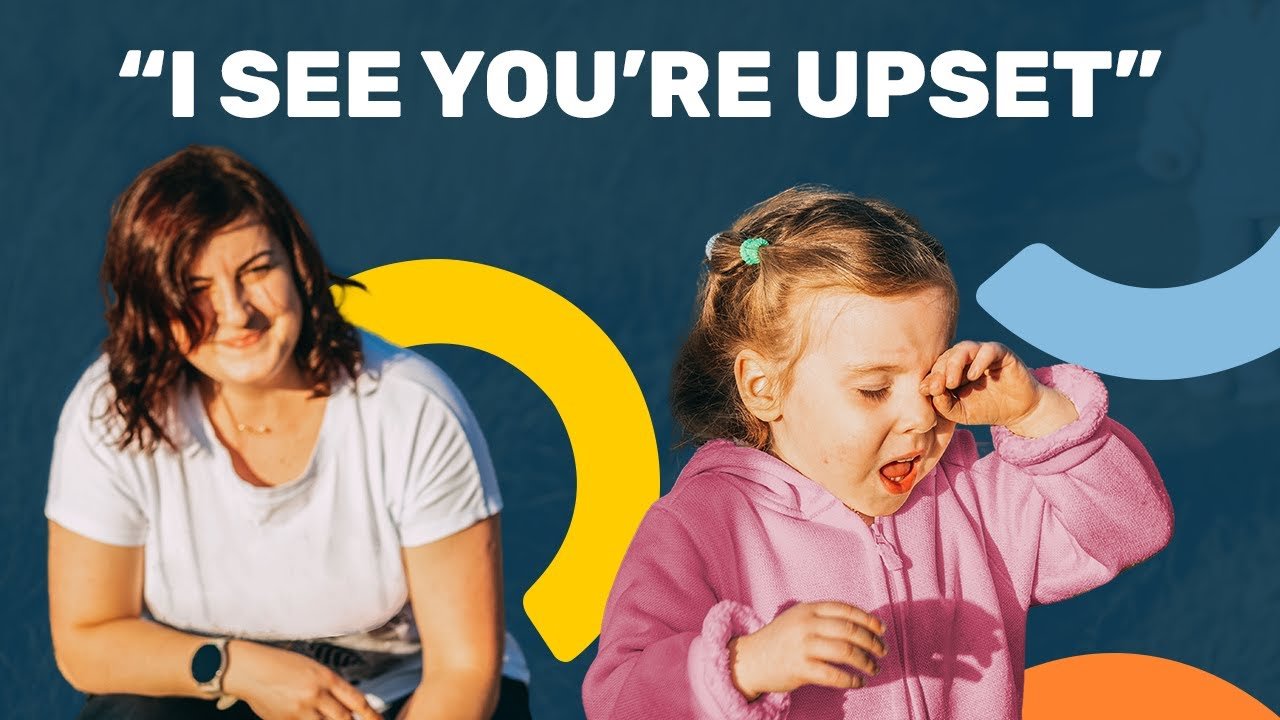In this video, we’ll explore the topic of toddler tantrums and why acknowledging their feelings may not always be effective. We’ll delve into the brain science behind this popular parenting advice and why it may not work as expected. You’ll also learn why tantrums happen in the first place and understand that it’s not your toddler’s fault! Managing big emotions in toddlerhood can be a challenge, but this article aims to provide helpful insights that can assist you in navigating this stage with more understanding and support.
We’ve all experienced those moments when our child is in the midst of a tantrum, and their emotions seem to be spiraling out of control. It’s natural to want to help them, and that’s where the advice of acknowledging their feelings comes in. However, have you ever noticed that despite repeating this mantra, the tantrum doesn’t stop? In fact, it may even worsen the situation. In this article, we’ll explore why this is the case and offer alternative approaches to support your child during these tough moments.
Why Acknowledging Toddler Tantrums Isn’t Always Effective

Introduction
It’s a situation that every parent has found themselves in at some point. Your toddler is in the midst of a tantrum, their emotions spiraling out of control, and you’re desperately trying to calm them down. You’ve likely been advised to acknowledge their feelings, to let them know that you understand why they’re upset. But what if this well-intentioned advice isn’t actually effective? In this article, we’ll explore the science behind why simply acknowledging a toddler’s tantrum may not always work, and we’ll delve into alternative approaches that may be more beneficial.
What is commonly advised to do during a toddler tantrum
When faced with a tantrum, many parents and caregivers are advised to acknowledge their child’s feelings. They’re told to say things like, “I see you’re upset because your brother took your toys.” The idea behind this strategy is that by acknowledging the child’s emotions, they will feel heard and seen, ultimately leading to a decrease in the tantrum. However, as many parents have experienced, this approach doesn’t always yield the desired results.
The brain science behind why this advice doesn’t work
To understand why simply acknowledging a tantrum may not be effective, it’s important to consider the science behind it. During a tantrum, a child’s thinking part of the brain is turned off, making it difficult for them to process what is being said to them. It’s as if they’re trying to hear someone speaking to them in the middle of a noisy crowd—it’s challenging to focus and fully understand what’s being communicated. Therefore, repeating phrases like “I see you’re upset” may not be effective because the child may struggle to comprehend the message.
The ineffectiveness of repeating ‘I see you’re upset’
Continually repeating the phrase “I see you’re upset” may not be beneficial for several reasons. First, it may actually escalate the situation, as the child may interpret it as being dismissed or not fully understood. Just as an adult would become frustrated if someone kept repeating the same phrase without offering any actual support or solutions, a child may also feel unheard and become more upset. Additionally, constantly repeating the acknowledgment without providing any additional support or guidance doesn’t help the child learn how to handle their emotions effectively.
Why constant acknowledgement can make tantrums worse
While acknowledging a child’s feelings is important, constantly repeating the acknowledgment during a tantrum can have unintended consequences. It can reinforce the behavior by giving attention to the tantrum itself. Children crave attention, and if they see that their tantrums are getting them the attention they desire, they may be more likely to continue with this behavior in the future. Additionally, constant acknowledgment without any other intervention or support may prolong the tantrum, as the child doesn’t receive any guidance on how to calm down or regulate their emotions.
The importance of being present and offering support instead
Instead of constantly repeating an acknowledgment, it is more effective to offer presence and support to a child in the midst of a tantrum. This can be done by providing physical comfort, such as a hug or gentle touch, or by simply sitting quietly beside them. Being present and offering support allows the child to feel loved, heard, and supported during a challenging moment. It communicates to them that they are not alone and that you are there to help them navigate their emotions.
The role of validation in teaching children to handle their emotions
Validation is a crucial aspect of helping children learn how to handle their emotions. Validating their feelings means acknowledging and accepting their emotions without judgment or dismissal. When you validate a child’s emotions, you send the message that it is okay to feel upset or angry. This helps them develop a healthy emotional regulation process and teaches them that their feelings are valid and worthy of consideration.
The negative impact of brushing off feelings and leaving a child alone
On the other hand, brushing off a child’s feelings or leaving them alone during a tantrum can have negative consequences. Doing so may make the child feel abandoned, unimportant, or that their feelings don’t matter. This can hinder their emotional development and potentially lead to further difficulties in handling emotions in the future. It’s important to find a balance between providing support and allowing the child to experience and process their emotions.
The parent’s role in emotional development
As a parent, you play a crucial role in supporting your child’s emotional development. It is your responsibility to help them understand and navigate their emotions, teaching them appropriate ways to express themselves and handle challenging situations. By providing a safe and supportive environment during tantrums, you are setting the foundation for your child to develop healthy emotional regulation skills.
The challenges of staying calm and guiding a child through a tantrum
Staying calm during a tantrum is not an easy task. It can be incredibly frustrating and emotionally draining to witness your child in distress. However, it’s important to remember that your own emotions can affect the outcome of the situation. Remaining calm and composed allows you to better guide your child through the tantrum and model healthy emotional regulation. It’s essential to take care of your own well-being and seek support when needed to ensure you can provide the support your child needs.
Seeking professional advice for toddler behavior issues
If you’re experiencing ongoing challenges with your toddler’s tantrums or behavior, it may be helpful to seek professional advice. Consulting with a pediatrician, therapist, or child behavior specialist can provide you with valuable insights and strategies tailored to your child’s specific needs. These professionals can offer guidance, resources, and interventions that can support you in managing and understanding your child’s behavior.
Introduction to the Happy Place course
For parents seeking comprehensive strategies to manage toddler behavior and support emotional development, the Happy Place course offers a valuable resource. Created by a clinical psychologist with expertise in child behavior, this course provides evidence-based strategies to help parents navigate every aspect of toddler behavior. It emphasizes building a secure connection with your child, teaching them how to manage and regulate their emotions without relying on fear or punishment.
Benefits of the Happy Place course
The Happy Place course offers several benefits for parents and caregivers. It provides a comprehensive guide to understanding the science behind toddler behavior, equipping parents with the knowledge to effectively support their child’s emotional development. The course offers practical strategies for managing tantrums and meltdowns, promoting emotional regulation and self-esteem, and building a strong parent-child connection. By implementing the strategies learned in the course, parents can foster emotionally well-balanced children who have a healthy relationship with their own emotions.
Conclusion
Acknowledging a toddler’s tantrum may not always be effective in calming them down. The brain science behind tantrums suggests that constantly repeating the acknowledgment may not be beneficial and can even prolong the tantrum. Instead, it’s important to offer presence and support to the child, validating their emotions and providing comfort. Parents have a significant role in guiding their child’s emotional development and can seek professional advice if needed. The Happy Place course offers evidence-based strategies to help parents navigate toddler behavior and promote healthy emotional regulation. By implementing these strategies, parents can build a strong connection with their child and support their long-term emotional well-being.

